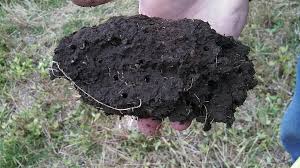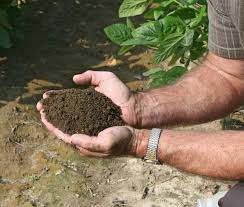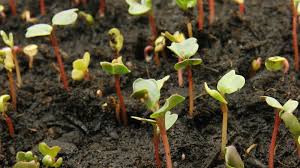The soil provides physical anchorage to plants and serves as a storehouse for water and nutrients essential for plant growth. The selection of a site for a specific crop is primarily influenced by the soil’s physical and chemical characteristics.
These factors are critical for understanding how soil influences crop growth, maturity, and ripening. The soil factors that characterize soil climate include soil air, soil temperature, soil moisture, soil reaction, and mineral nutrient supply.
Soil Air and Its Impact on Crop Growth and Maturity
Soil structure significantly influences oxygen diffusion, soil aeration, the composition of soil air, and plant diseases. The percentage of soil volume occupied by air is considered an indicator of soil aeration.
Generally, the higher the bulk density, the more compact the soil, leading to fewer pore spaces. This situation limits plant growth by restricting root and shoot development.
High bulk density inhibits seedling emergence, increases mechanical resistance to root penetration, and reduces oxygen supply to the root system, which results in poor crop growth and yield.
The composition of soil air differs from atmospheric air, particularly in moisture and carbon dioxide content. While soil water vapor content is higher than in the atmosphere, carbon dioxide levels may exceed 0.3%, which can displace oxygen entirely.
Some pathogens, such as Ophiobolus gramineous, cannot survive in waterlogged soils, while root rot caused by Fusarium sp., Rhizoctonia sp., and Aphanomyces is most severe in poorly drained soils.
Read Also: Amazon Flowers: All You Need To Know About
Soil Moisture and Its Role in Crop Ripening and Quality

Adequate soil moisture during the pre-harvest period is crucial for maintaining post-harvest quality. Water stress during the growing season can reduce the size of harvested plant organs, leading to soft or dehydrated fruits that are more susceptible to damage and decay during storage.
On the other hand, excess water during the growing season can dilute soluble solids and acids, negatively affecting flavor and nutritional quality. Excess moisture on harvested vegetables can also increase the risk of post-harvest diseases.
To minimize water retention on harvested crops, surface or subsurface irrigation is preferable over overhead irrigation. Vegetables harvested in the early morning, during rainy periods, or from poorly ventilated areas are more prone to increased post-harvest decay.
Soil Temperature and Its Effect on Crop Development
Soil temperature fluctuates seasonally and daily due to variations in radiant energy and energy exchange at the soil surface. Soil temperature regulates physicochemical and biological processes in the soil and affects gas exchange between the soil and the atmosphere.
Environmental factors influence soil temperature by controlling heat input and dissipation at the soil surface, impacting organic matter decomposition, mineralization of organic materials, and soil water content, which are crucial for plant growth and development.
Soil temperature is more closely related to crop development than air temperature. It directly affects plant processes, including nutrient and water uptake, root growth initiation, branching, and orientation. Furthermore, soil temperature influences the susceptibility of crops to diseases.
Soil Reaction and Its Impact on Nutrient Availability
Soil reaction (pH) plays a significant role in nutrient availability. Acidic soils with high concentrations of ions such as aluminium and manganese reduce the availability of phosphorus. The availability of molybdenum also declines as soil pH decreases.
Extreme soil pH conditions hinder plant growth. Most plants do not thrive in soils with excessively high or low pH, unless they are specially adapted. Soils with low pH (acidic soils) affect the plant’s ability to absorb essential nutrients.
The ideal pH range for most plants is between 5 and 8.5. Below pH 5, manganese and aluminium can become toxic, leading to nutrient overloads that plants cannot process, causing damage and even plant death.
Acidic soils can release aluminium, stunting plant growth and altering nutrient uptake. Some plants may also suffer from manganese and iron toxicity, leading to yellowing, browning, and leaf death.
Read Also: Pumpkin Flowers (Pumpkin Blossoms): Complete Growing and Care Guide
Mineral Nutrient Supply and Its Effect on Crop Ripening and Storage

The soil’s capacity to supply essential plant nutrients significantly influences crop production. Mineral nutrients play a vital role in various aspects of crop physiology, ripening, and storability.
The levels of mineral nutrients in crops directly affect their quality, and deficiencies or imbalances can lead to physiological disorders and pathological issues in grains and fruits.
The nutrient status of the soil influences not only the quality of the crops but also their resistance to diseases, pests, and environmental stress.
The balance and availability of nutrients such as nitrogen, phosphorus, potassium, and trace elements are crucial in determining the overall health and productivity of crops during their growth, maturity, and ripening stages.
Do you have any questions, suggestions, or contributions? If so, please feel free to use the comment box below to share your thoughts. We also encourage you to kindly share this information with others who might benefit from it. Since we can’t reach everyone at once, we truly appreciate your help in spreading the word. Thank you so much for your support and for sharing!

